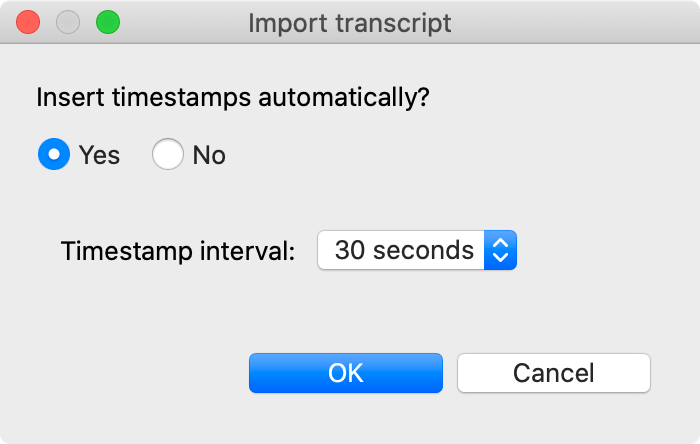You can import audio and video files into MAXQDA, as described here:
- by clicking the Import Documents icon
 in the "Documents System", or
in the "Documents System", or - by clicking on the Audios or Videos icon on the Import tab.

There are some special considerations regarding audio and video files.
MAXQDA supports the the following formats as standard:
| Audio | Windows: MP3, WAV, WMA, AAC, M4A Mac: MP3, WAV, AAC, CAF, M4A |
| Video | MP4, MOV, MPG, M4V, 3GP, 3GGP Windows: additionally AVI and WMV For video, a MP4 file with the video codec H.264 / AVC is recommended. |
Audio and video files are generally not imported directly into a MAXQDA. Instead, they are stored in the MAXQDA Externals folder and linked to a text document in which you can, if necessary, save a transcript.
When importing an audio or video file, MAXQDA creates a new text document with the name of the media file and assigns the newly added document the inserted media file. The media file itself is stored in the MAXQDA external folder. If a file with the same name already exists in the Externals folder, MAXQDA asks if the existing file should be overwritten. You can adjust the location of the external address in the MAXQDA settings. The settings are called up via the gear wheel at the upper right edge of the window.
In the "Document System", you will recognize a text document with the associated media file by the additional symbol displayed in addition to the document symbol: a musical note ![]() for audio files and a video camera
for audio files and a video camera ![]() for video files.
for video files.

Assigning an existinging transcript to an audio or video file during import
During the import of an audio or video file, MAXQDA asks you whether there already is a transcript that you want to assign to the media file. If you select Yes a dialog window pops up where you can select the transcript file.
If the selected transcript does not contain time stamps, MAXQDA will ask you whether you want them to be generated automatically:

MAXQDA will automatically place time stamps in the transcript at the selected interval, making it easier to listen to the original sound of a selected text passage.
Assigning audio/video files to a text document
You can also assign a media file to an existing text document. To do this, right-click on the document in the "Documents System" and select Properties. Here a link to a media file can be assigned or changed at any time.
To do this more quickly you can right-click on the document and choose Link Audio/Video file.

Play and edit audio and video files
Audio and video files can be played and edited in MAXQDA's "Multimedia Browser". For detailed information, see Analyzing Videos.
